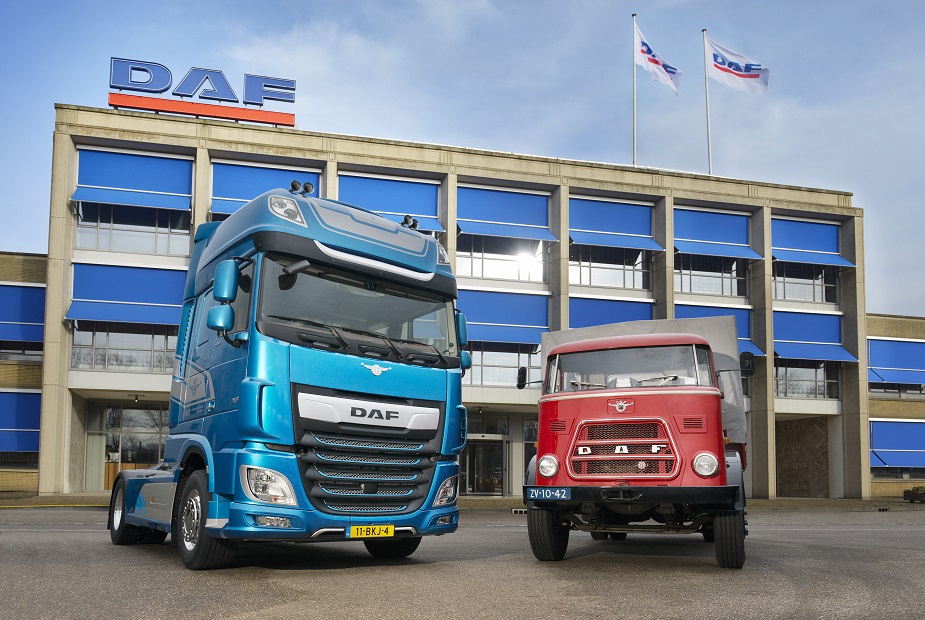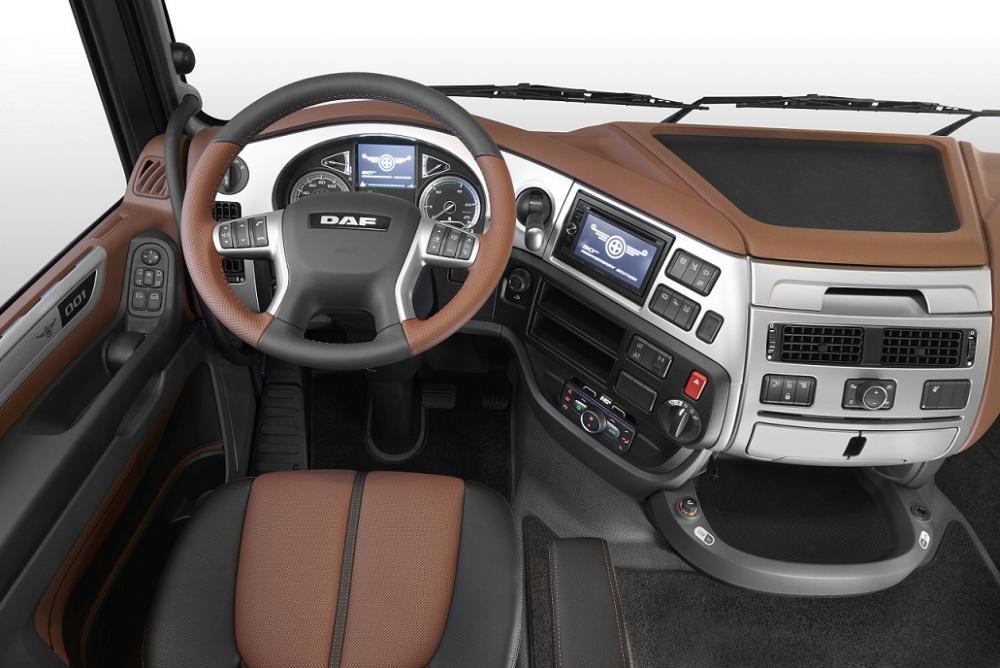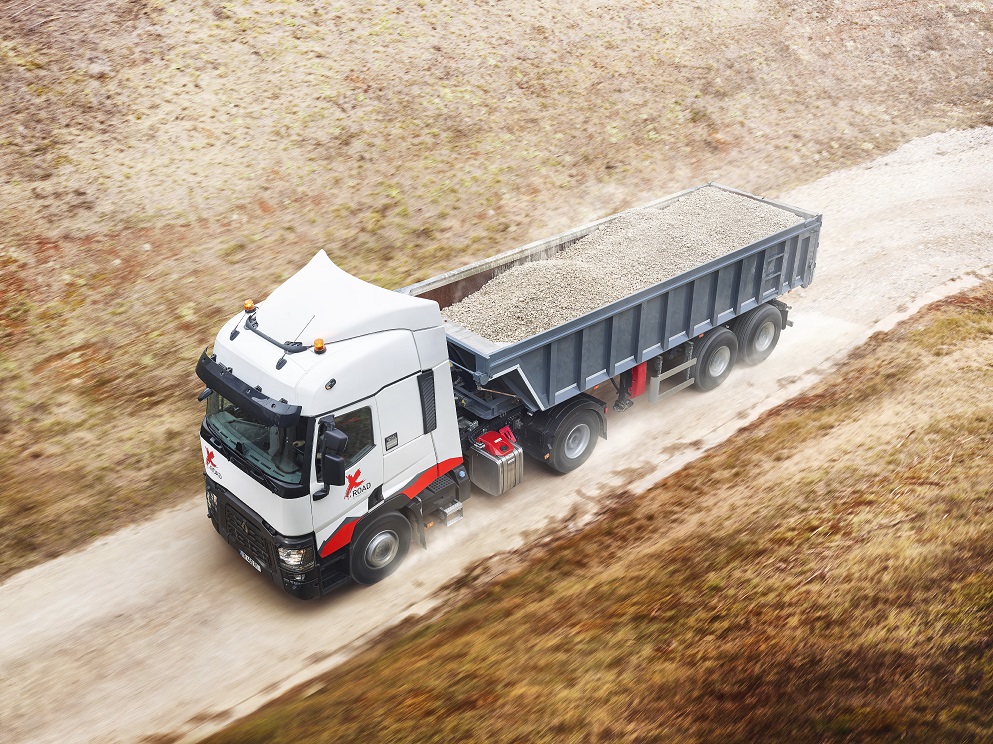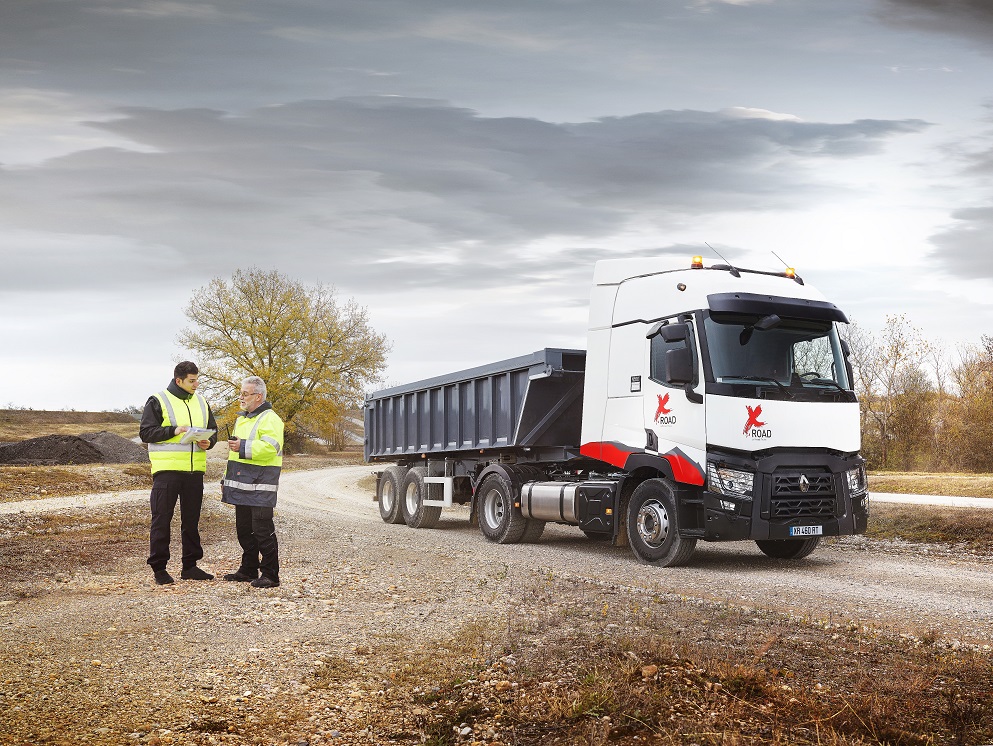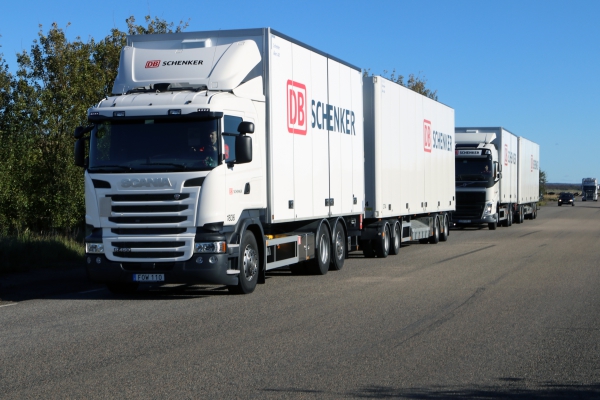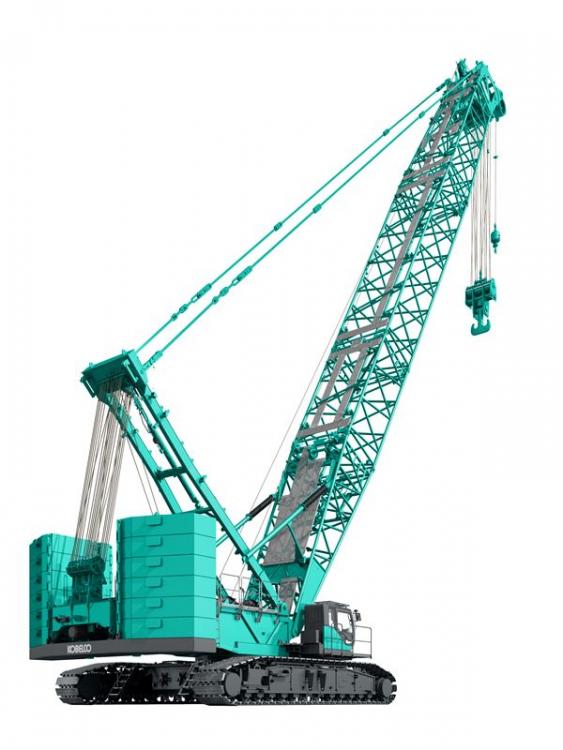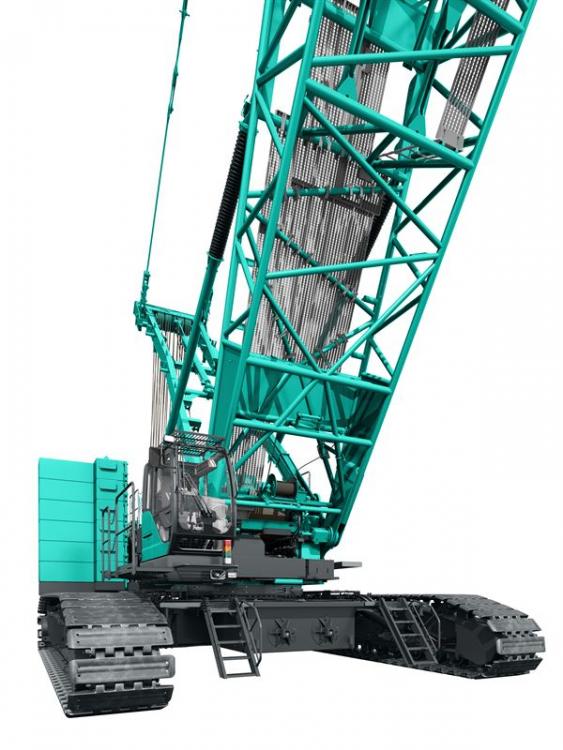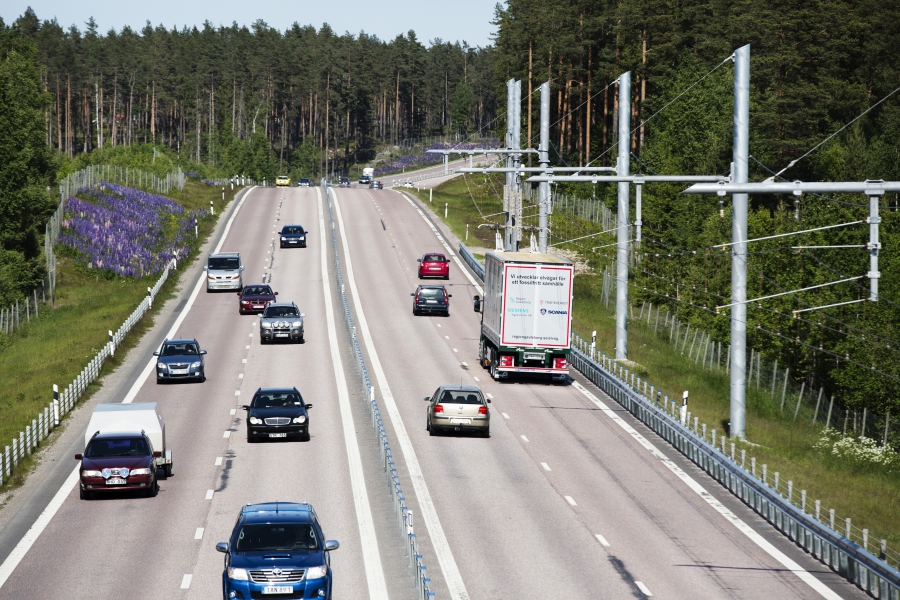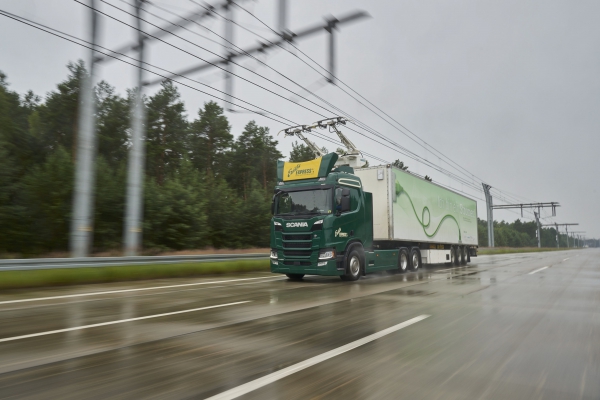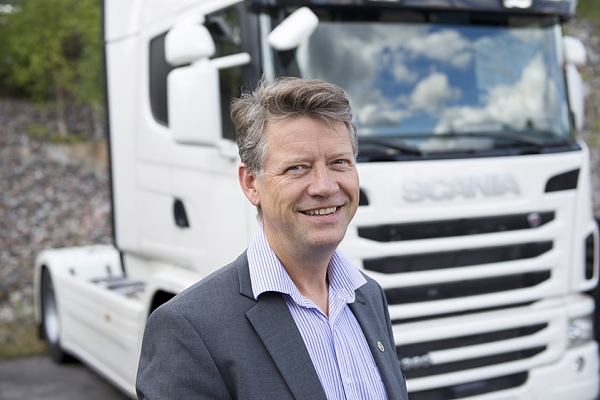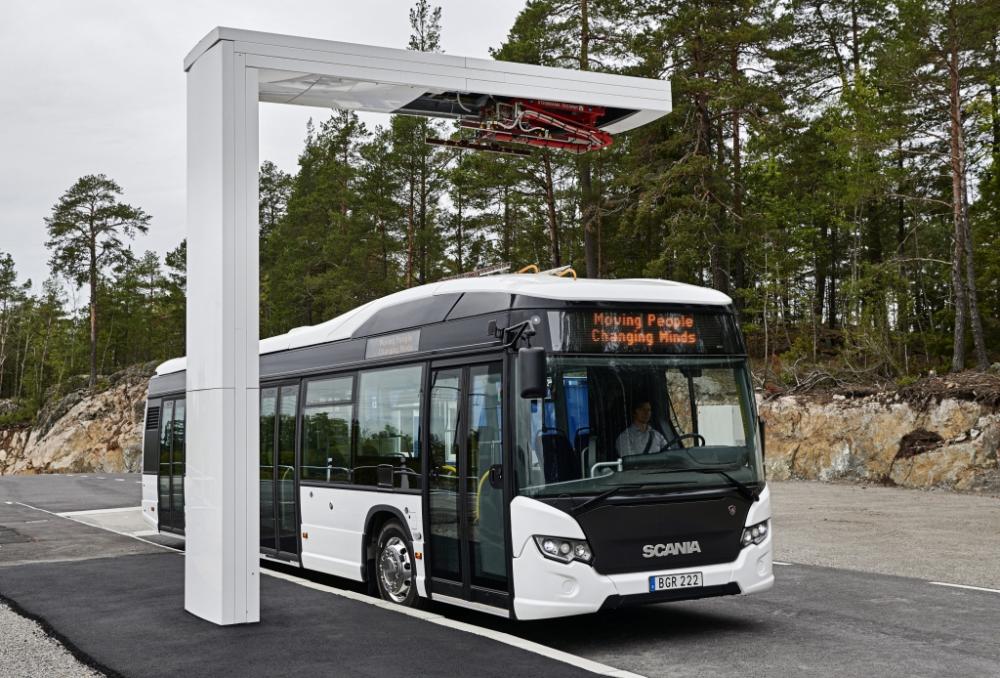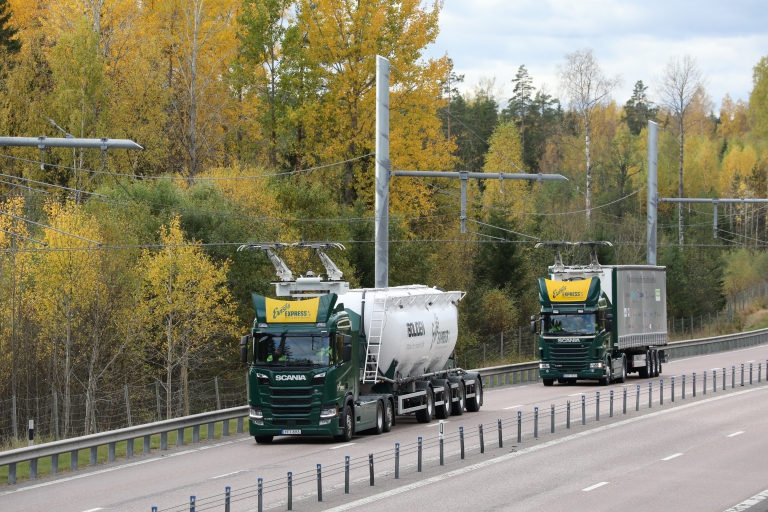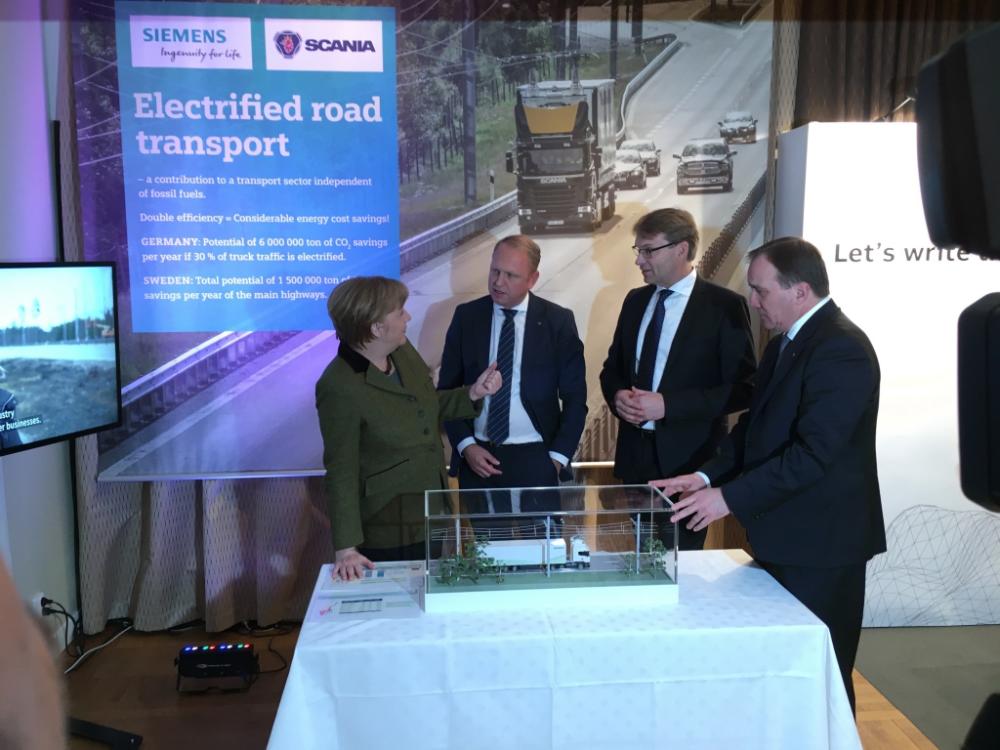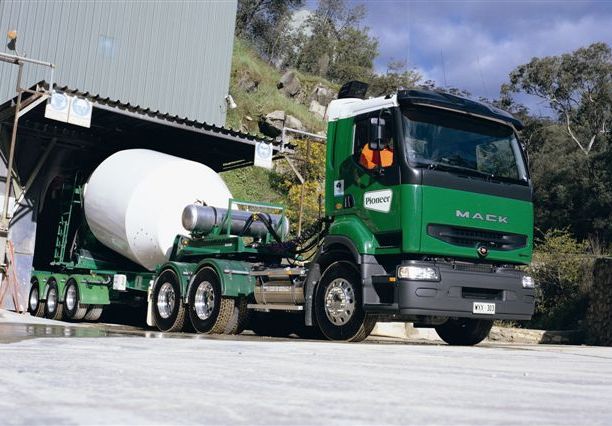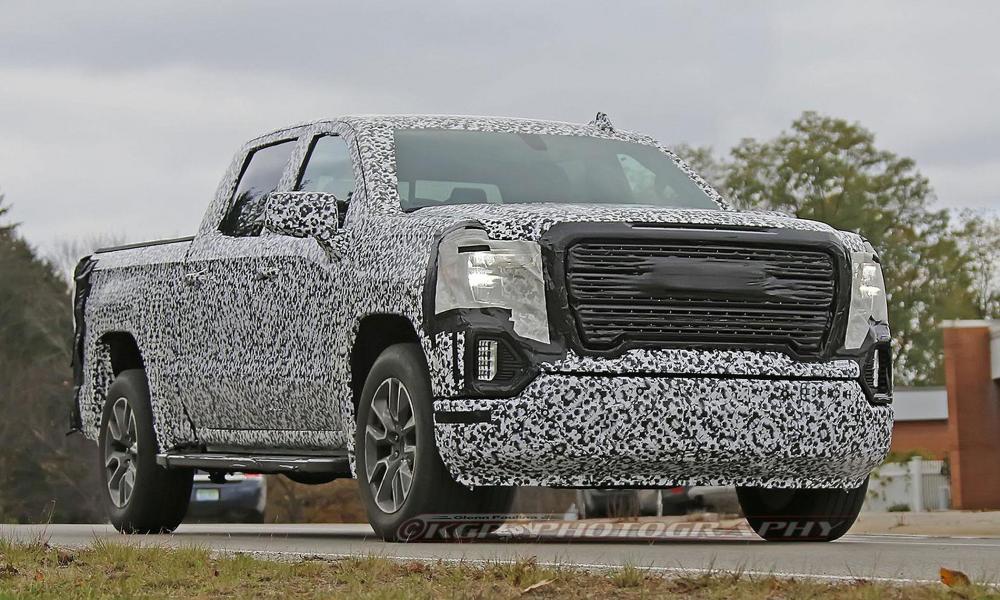
kscarbel2
Moderator-
Posts
18,886 -
Joined
-
Days Won
114
Content Type
Profiles
Forums
Gallery
Events
Blogs
BMT Wiki
Collections
Store
Everything posted by kscarbel2
-
MACK filters
kscarbel2 replied to Lmackattack's topic in Antique and Classic Mack Trucks General Discussion
Yes, I knew that was a 483GB465. It's red because it is a primary filter. Secondary filters are green (or at least they were). Source a Donaldson P551030 or Baldwin BF1219. -
Reuters / February 5, 2018 Zhejiang Geely Holding Group [the largest shareholder of Mack brand parent Volvo Group] plans to take a major stake in Daimler, German weekly paper Bild am Sonntag reported, citing sources. Geely could become Daimler's biggest shareholder, the paper said. Sources had said in November that Daimler turned down an offer from Geely to take a stake of up to 5 percent via a discounted share placement. Daimler said Geely was welcome to buy shares in the open market. Geely, which owns Swedish automaker Volvo, is keen to access Daimler's electric car battery technology and wants to establish an electric car joint venture in Wuhan, China, sources with knowledge of Geely’s thinking said at the time. Daimler’s truck brands include Freightliner, Western Star, Mercedes-Benz, FUSO and BharatBenz. Currently, Daimler’s largest shareholder is the Kuwait Investment Authority with a 6.8 percent stake, followed by BlackRock with 6 percent.
-
Wall Street sours on Hackett's Ford Michael Martinez, Automotive News / February 5, 2018 DETROIT — To hear Wall Street tell it, Ford Motor Co. is in dire straits. Ford shares last week fell under $11, lower than when Jim Hackett became CEO last May, despite big gains for the broader market in those eight months. Ford's earnings outlook for the year dimmed in light of lower-than-expected 2017 results. And the company has been put on notice that, unless it can point to clear progress soon, its credit rating could slip to just one level above junk status, a threshold with both symbolic and financial consequences. It's a mind-boggling turn of fortunes for the nation's second-largest automaker, which had emerged from the industry's downturn with significant momentum and posted record earnings in 2015 and 2016. Ford still is making billions of dollars and posting healthy sales figures, but the drumbeat of negative news has seemingly wiped away any of the shine that remained from being the only Detroit automaker to avoid bankruptcy. Ford, since Hackett took over, has readily admitted its faults — a lack of "competitive fitness," as Hackett puts it — and said it has a plan to pump up profit margins by the end of the decade. But analysts and investors say Ford has been too stingy with the details needed to generate enthusiasm about its prospects. As a result, the market is punishing Ford while viewing rivals — particularly General Motors, whose shares hit a record high late last year — more favorably. "When a CEO comes out and says it's going to be a bad year, that's not going to instill confidence in investors," David Kudla, CEO of Mainstay Capital Management in Grand Blanc, Mich., told Automotive News. "There hasn't been the data or the narrative to instill confidence. It's created uncertainty around what success at Ford can be." 'An erosion' Moody's Investors Service, which downgraded Ford's credit outlook to negative from stable last week, said the automaker had "allowed an erosion in many of the operating disciplines that it established following the 2009 restructuring of the North American auto sector." Hackett admitted as much in October, saying Ford hasn't "grown revenue and volume to the degree that we had planned coming out of that recession. Good news is revenue did grow, but so did our costs." Moody's said Ford's challenge is to allocate capital in the right way across what it calls a growing number of "potential investment opportunities," including certain geographic markets, vehicle categories, joint ventures or partnerships and mobility business models. It said there is little potential to upgrade Ford's rating before 2021. Ford countered those concerns with an emailed statement saying the company "has delivered year after year of solid financial results" since the recession. "We continue our intense focus on improving the operational fitness of the business to deliver stronger results while building toward our vision of the future," the statement said. "We're confident that as these fitness actions take hold, the market will recognize our progress." 'Get moving' Stephanie Brinley, a senior analyst with IHS Markit, said some of how the market views Ford stems from how it has communicated — or failed to communicate — its plans. "Part of it comes down to messaging," she said in an interview. "Their forward strategy for mobility came out slow compared to some other automakers." Hackett has called for a sweeping restructuring of the business, including $14 billion in cost cuts and a major shift in investment from cars to light trucks. But those initiatives won't pay off for a few years, and Hackett has declined to elaborate on some aspects of the plan. "We may need to wait 18-24 months before the Ford story is exciting again," Barclays analyst Brian Johnson wrote Jan. 25, after Ford posted a $2.4 billion fourth-quarter profit but lowered its earnings projections for 2018. Hackett, on a conference call to discuss the earnings, declined to elaborate on six recently implemented fitness initiatives, which irked Morgan Stanley analyst Adam Jonas. "You're clearly not wanting to talk about them," Jonas said. "That's a problem, Jim. How long do we have to wait?" Hackett promised Ford would reveal more details this year, but not before communicating them to Ford employees. "He's been there for eight months now," Kudla said. "Maybe the jury's still out, but he's got to get moving." Helping Ford's cause will be the introduction this year of 23 new or freshened vehicles globally, more than twice as many as in 2017. Those include 11 vehicles in North America. It's important to note, Brinley said, that Ford — which in 2012 reclaimed its Blue Oval logo and other assets it had mortgaged to obtain a lifesaving credit line in 2006 — is still in a good position relative to its last round of trouble. Ford's per-share guidance for 2018 translates to earnings of $8 billion to $9.2 billion, according to Barclays, down from an initial forecast of $9.9 billion. "You're not looking at a company that's about to start losing money," Brinley said. "It's just a question of what those profit margins are."
-
Glenn Garvin, Miami Herald / February 2, 2018 A couple of years ago, the only Americans who were familiar with the term Deep State were a handful of against-the-current political scientists and the readers of an obscure comic book about a wing of the FBI dedicated to covering up the fact that Russia beat America to the moon. But since then, Deep State has entered the public lexicon with a vengeance. Congressmen promise to bust it to pieces. Trump says it’s taken control of the FBI. Right-wing podcasts warn it’s going to kill us all. Left-wing commentators grumble that their concept has been stolen and turned into a cartoon. “You’ve got this strange meeting of the crazy left and the crazy right and they’re all onto this Deep State thing, and it’s entered into public parlance,” says journalist-historian Max Holland, author of books on Watergate and the Kennedy assassination. “It used to be that crazy conspiracy thinking was mostly kept in one little box labeled JFK ASSASSINATION, but now it’s everywhere.” If that’s an exaggeration, it’s not by much. An ABC News/Washington Post poll last year showed that nearly half the people in America believe a Deep State — defined as “military, intelligence and government officials who try to secretly manipulate government policy” — is working behind the facade of the constitutional U.S. government. The definition used by the poll does not necessarily match those used in public debate. What, exactly, the Deep State is depends on whom you talk to, from judicious political scientists who talk wonkily of the competing interests of government bureaucracies to wing-nuts like the guest on the uber-conservative Alex Jones radio show who wailed, “Trump will be killed. … They’re going to kill us, they’re going to kill him, they’re going to kill everybody!” Though Trump and his allies have popularized the term, referring to what they believe is a covert coalition of government officials and institutions and their allies in big media organizations who are trying to thwart his policies, the concept of the Deep State precedes them by many years. It originated in the 1920s to describe the iron-fisted clique of security officials and gangsters who pulled the strings — bloodily, if necessary — of Turkey’s puppet civilian government. The first to apply it to the United States was Peter Dale Scott, a leftist University of California scholar, in his 2007 book “The Road to 9/11,” which wove a dark tapestry of covert conspiracy from events as diverse as the Kennedy assassination, Watergate and the Iran-contra scandal. “There’s nothing crazy about the idea of the Deep State, of the idea that elites inside and outside the government wield power not assigned to them by the Constitution, irrespective of the will of voters,” Scott told the Miami Herald. “The way the Trump people are using it may be cartoonish, but the idea isn’t.” He has plenty of respectable company in thinking so, including at least one former U.S. president. In 1961, more than four decades before Scott’s book, President Eisenhower warned the nation that “we must guard against the acquisition of unwarranted influence, whether sought or unsought, by the military–industrial complex.” “Eisenhower didn’t use the phrase, but he’s definitely talking about a Deep State there,” says Joseph Uscinski, a University of Miami political scientist. “This is an idea that has been around for a long time.” That doesn’t necessarily make it correct, though, Uscinski adds, particularly in the somewhat casual way Trump and his supporters use the term. “If you say the president faces bureaucratic resistance to his programs, that’s reasonably true,” says Uscinski. “If you say government bureaucracies have their own agendas, that’s reasonably true. If you say a secret cabal in the FBI is trying to take down the president — well, that could be true. But you can’t just say it, you’ve got to provide evidence.” Not so long ago, the idea of the Deep State would have been dismissed out of hand by most Americans. In fact, it was. In 1956, sociologist C. Wright Mills published a study called “The Power Elite,” which began: “The powers of ordinary men are circumscribed by the everyday worlds in which they live, yet even in these rounds of job, family and neighborhood they often seem driven by forces they can neither understand nor govern.” Mills’ Deep State-ish argument — that the country was actually ruled by an interlocking web of individuals from elite families who went to the same prep schools and universities, joined the same secret societies or eating clubs, sat on the same corporate boards and often intermarried — was initially dismissed as pure crackpot by respectable academia and journalism. The New York Times Book Review called it “an angry cartoon,” Time magazine labeled it “sociological mumbo jumbo.” But within a decade, most college political science departments were assigning their students reading from Mills’ book. Its influence extended well beyond U.S. borders: Fidel Castro was an enthusiastic reader, and his speeches cadged from it, though without giving credit. Revelations over the past 50 years about the dark underbelly of the U.S. government have undoubtedly opened American minds to more conspiratorial interpretations of the way Washington works. Does it sound crazy to compare the United States government to that of a lawless, coup-happy country like Turkey? Maybe. But is that any less crazy than the fact — emphasis on fact — that the Pentagon planted a spy in the Nixon White House to steal secrets from the wastebaskets? Or that the CIA was dosing unsuspecting civilians with LSD to see if it would make them receptive to mind control? Or that the government was spying on people through their Xbox video games? (Edward Snowden, the rogue National Security Agency subcontractor who spilled the secrets about the Xbox, told The Nation magazine: “There’s definitely a Deep State. Trust me, I’ve been there.”) Even observers who are dubious about Trump’s claims that he’s the victim of a massive Washington cabal believe he may be facing a much milder version of the Deep State: stiff resistance from the government’s gargantuan bureaucracy, which, with its civil-service protections, stays in place as presidential administrations come and go. Long-lived bureaucracies start to resemble living organisms that fight to protect their own turf, from each other and even more from elected officials, which the bureaucrats tend to regard as temporary pests who will be moving on soon. “The problem gets worse when there are big ideological contrasts from one administration to the next,” says Adam J. White, a research fellow at the Hoover Institution and director of the Center for the Study of the Administrative State at George Mason University. “For eight years, we had President Obama, possibly the most liberal president in history, and most of the people he hired probably shared his political vision. And now he’s been replaced by a guy who came promising to ‘drain the swamp’ of Washington. Even before President Trump took office, you had people announcing they would form ‘the resistance.’ I’m sure there are problems. “Practically every president has, to some extent, quarreled with the bureaucracy. I was reading a biography of Henry Kissinger and it had this story about him — before he joined the government himself — going to visit his friend Arthur Schlesinger, who was a member of President John F. Kennedy’s staff. Kissinger says, ‘Hey, how’s it going?’ and Schlesinger answers, ‘It’s just awful, we can’t get any of our programs through the bureaucracy, we’re practically dead in the water.’ So much for the New Frontier!” .
-
Trump and Immigration (Illegal Immigrants in the US)
kscarbel2 replied to kscarbel2's topic in Odds and Ends
-
VW seeks US emissions trial delay after ‘prejudicial’ documentary The Financial Times / February 2, 2018 Carmaker claims linking of monkey experiment to Nazis renders fair hearing impossible Volkswagen is arguing that an “inflammatory comparison” between a caged monkey experiment it sponsored and the Nazis has robbed it of the chance of a fair hearing in US trials related to its use of emissions-cheating software. Last week, a Netflix documentary called Dirty Money depicted a diesel emissions experiment in 2014 in which trapped monkeys sucked in exhaust fumes from a Volkswagen Beetle while watching cartoons. The images are followed by video footage of Hitler to make an explicit comparison with the Holocaust. In a court filing in the US on Friday, Volkswagen said the documentary misrepresented the experiment as “animal torture” and failed to mention that it had received approval from the Institutional Animal Care and Use Committee, an independent US review board to protect animals. Michael Melkersen, a lawyer leading more than 300 cases against VW, uncovered the experiment and was quoted extensively in the documentary. His first case is set for trial on February 26. In its filing, VW called for a six-month “cooling off” period before the trial to allow the “prejudicial publicity” to subside. Mr Melkersen’s case against VW Group of America in Virginia, home of the German carmaker’s US base, is the first of about 2,000 suits representing those who opted out of a multibillion-dollar collective settlement in 2016 for reparation in the emissions scandal. He argues for citing the monkey experiment at trial on the basis that the Beetle in the study was rigged with emissions-cheating software, showing that Volkswagen “engaged in a pattern of concealment and nondisclosure”. VW pleaded guilty last year to installing cheat software in more than 500,000 US cars. Damages from the scandal in North America have amounted to more than $25bn in fines, penalties and car buybacks. Car owners were given the option of selling their cars back to VW and were compensated by at least $5,100 each. Mr Melkersen is seeking $725,000 for his first client. VW on Friday asked for the trial to be delayed by six months, arguing that a delay was needed because of “the widespread and prejudicial publicity”, arising from the Netflix documentary. “VW America cannot now, consistent with due process, litigate these cases in an atmosphere in which pretrial publicity has connected it directly with Hitler and the Holocaust and other horrors counsel has alleged through the media that have no relevance to these consumer fraud claims.” The revelation of the experiment caused uproar in Germany. The three carmakers that financed the lobbying group that sponsored the study — BMW, Daimler and VW — have all distanced themselves from it. Each suspended an executive involved. VW apologised this week with Matthias Müller, chief executive, calling the test “unethical and repulsive”. VW’s lawyers do not defend the monkey experiment as benign but argue that it is irrelevant to a consumer fraud case regarding the use of software to understate emissions in laboratory tests. The monkey experiment results were never published, so it could not have contributed to alleged false advertising, VW claims. The carmaker adds that Mr Melkersen had previously agreed “in advance of trial that he would not raise anything about inflammatory aspects of German history, which have no relevance to a consumer fraud case”. In the documentary, Mr Melkersen alludes to Hitler and the founding of VW in 1937: “One cannot help to think back throughout history of another series of events involving individuals being gassed by a person who was actually at the opening of the very first Volkswagen factory.” Mr Melkersen has previously argued that Volkswagen’s attempts to publish results of the monkey study in 2016 — after the emissions fraud was exposed — “directly contradicts [Volkswagen’s] claims of innocence and remorse for its ‘unknowing’ misconduct”. . . .
-
U.S. Seeks Major Fines, Recalls in Fiat Diesel Settlement Ryan Beene, Bloomberg / February 2, 2018 The U.S. Justice Department has offered to settle its emissions-cheating lawsuit against Fiat Chrysler Automobiles NV if the automaker recalls 104,000 vehicles and pays a substantial but unspecified civil penalty. The proposed framework of an offer was extended to the Italian-American car company last week and included steps it would have to take to mitigate its past pollution and make internal changes to prevent future violations of environmental rules, according to a copy of the settlement offer obtained by Bloomberg News. The settlement “must include very substantial civil penalties” large enough to deter future violations and that “adequately reflect the seriousness of the conduct that led to these violations,” Justice Department lawyers wrote in a Jan. 27 letter to Fiat Chrysler attorneys. Spokesmen for the company didn’t respond to a request for comment. Fiat Chrysler’s U.S.-listed shares fell as much as 14 percent on the news and closed down 7.2 percent in New York trading Friday, the biggest drop since January 2017. Reaching a final settlement would resolve civil violations of clean-air regulations laid out in a complaint filed May 23. The Justice Department said Fiat Chrysler had used illegal software to pass laboratory emissions tests while permitting its diesel vehicles to exceed pollution standards on the road. The proposed settlement doesn’t include an end to a criminal investigation of the automaker by the Justice Department related to diesel emissions. The civil complaint was filed in federal court on behalf of the Environmental Protection Agency and the California Air Resources Board and alleged violations of the Clean Air Act. “We are engaging in conversations but I’m not involved in the settlement talks,” Mary Nichols, chair of the California Air Resources Board, said Friday at Bloomberg New Energy Finance’s The Future of Mobility Summit. “It’s interesting that Fiat Chrysler has the same team of lawyers representing them that worked with VW.” The sides have been in talks for months under the direction of court-appointed settlement master Kenneth Feinberg. Feinberg declined to comment. Fiat Chrysler has acknowledged in a term sheet the company earlier submitted to the government lawyers the need for a settlement to include civil penalties, an emissions fix for the diesel vehicles and environmental mitigation efforts, the letter said. The automaker proposed committing to projects to promote low- or zero-emissions “mobility projects” in the December term sheet, which the Justice Department said regulators would be willing to consider. But, the letter cautioned, such projects are not the same as penalties and the government believes a “very substantial civil penalty payment is an essential element” of any deal to resolve the case. The parties have not yet discussed the value of any fines, according to a person familiar with the talks. A recall would have to bring all of Fiat Chrysler’s vehicles into full compliance with emissions standards, the letter said. The case involves diesel-powered Jeep Grand Cherokee SUVs and Ram 1500 pickups from model years 2014-2016 that regulators allege were sold with emission software that violated U.S. clean-air rules. The case followed one filed in late 2015 against Volkswagen AG. That case touched off the biggest scandal in modern automotive history when VW admitted that about 11 million diesel cars worldwide were outfitted with so-called defeat devices -- embedded algorithms used to game emissions tests. VW’s costs from the scandal has reached about $31 billion in fines and related elements. Fiat Chrysler would likely pay less because Clean Air Act violations are assessed on the number vehicles affected. VW admitted to rigging more than 500,000 cars in the U.S. -- about five times the number Fiat Chrysler is alleged to have cheated with -- and did so over a longer period of time. And unlike in the VW settlement, the terms under discussion between Fiat Chrysler and the U.S. don’t include a requirement to buy back any vehicles. The diesel issue could cost Fiat Chrysler between $460 million and more than $1 billion, according to estimates made last year by Barclays Plc, Mediobanca SpA and Evercore ISI. In December, Sergio Marchionne, the company’s chief executive officer, said he anticipated “manageable costs” from the diesel issue. Unlike VW, Fiat Chrysler has denied intentional wrongdoing. Marchionne said he was outraged when the EPA brought its initial notice of violation against the automaker last year, calling the allegations “unadulterated hogwash.” The settlement letter cites “compelling evidence” that Fiat Chrysler knew or had reason to know that the vehicles did not comply with clean-air rules and that the company misled regulators, calling the conduct “egregious.”
-
DAF Trucks Press Release / February 2, 2018 DAF Trucks presents the limited 90th Anniversary Edition of the New XF. This truck commemorates the fact that 90 years ago Hub van Doorne laid the foundation of DAF: now one of Europe’s most successful truck manufacturers. The anniversary edition features a premium option package, exclusive striping and subtle exterior design elements. To stress the exclusivity of this special truck it comes with the class leading Super Space Cab and PACCAR’s most powerful 530 HP/390 kW MX-13 engine. The 90th Anniversary Edition is limited to only 250 vehicles. It is available as a 4x2 tractor (FT) for the markets on the European continent and as a 6x2 tractor (FTG) for the UK and Ireland. Each vehicle features a unique number, which is visible in both the decorative finish inside the cab as well as in the specially illuminated DAF logo panel that can be seen when the door is opened. Unique striking exterior The unique limited edition of DAF’s ‘International Truck of the Year 2018’ is available in three attractive metallic colours: Anniversary Black, Rouge Flamme and Jamaica Blue. Coloured strips in blue or red on the grille express the exclusivity of the XF 90th Anniversary Edition. A hand crafted version of DAF’s famous historic logo is proudly displayed on the front of the truck, as well as on the sides and back of the cab. Top of the line options DAF’s unique 90th Anniversary Edition has a very rich specification. It features – among other things – an air suspended Super Space Cab with all exterior parts in cab colour, LED headlights, Skylights, fog and cornering lights, a roof air deflector with side collars, side skirts (4x2) and Alcoa aluminium wheels. Air horns are mounted on the cab roof. Unique interior The ultra-comfortable interior – in Exclusive trim – has unique features like the embossed historical DAF logo in the head rest of the Xtra Leather air seats. DAF’s classic logo is also applied to the deco strips on the doors, on the Driver Information Panel and the high-end radio-navigation system. Furthermore, the interior trim is equipped with full leather seats, leather armrests and door panels and a leather finish on the steering wheel. Climate control, a roof mounted parking cooler, TruckPhone, a microwave, DAF’s renowned refrigerator under the lower bunk and the DAF Night Lock are all included. Luxury gift set Each 90th Anniversary Edition of the XF comes with a numbered, luxury gift set. The set includes a full leather travel bag, a stylish jacket with leather details, a DAF Waterman pen in customized leather box, a leather credit card wallet and a 90th Anniversary Edition sketch signed by DAF’s chief designer Bart van Lotringen. Hub van Doorne “When developing his trucks, Hub van Doorne focused on technology, functionality and driver comfort”, stated Preston Feight, President of DAF Trucks. “The elite 90th Anniversary Edition pays respect to the founder of our great company.” .
-
Renault Trucks Press Release / February 2, 2018 To meet the specific requirements of worksite supply, Renault Trucks has launched the T X-Road 460. This recent used vehicle is reconditioned in the specialised “Used Trucks Factory” that forms an integral part of the Renault Trucks manufacturing site in Bourg-en-Bresse. Renault Trucks is launching the T X-Road 460, a new used vehicle dedicated to worksite supply. The T X-Road belongs to the manufacturer’s new range of customised used vehicles. Trucks are rigourously selected, subject to 200 inspection points and prepared in the specialised “Used Trucks Factory” that forms an integral part of the manufacturing site in Bourg-en-Bresse. Le Renault Trucks T X-Road is fitted with an 11 L 460 hp Euro 6 engine and is available in a 4x2 configuration. It features reinforced bodywork, including steel bumper bars, an ultra-strong stepwell and protective headlight grills. 315/80 mixed profile tyres have been fitted and ground clearance has been raised by 60 mm. Performance of the robotised Optidriver gearbox has been boosted by the addition of an off-road mode and manual accelerator. The T X-Road 460 used truck comes with a 1-year or 120,000 km warranty. This manufacturer’s warranty, which covers all incidents related to the engine, gearbox and axles, is valid throughout all Renault Trucks service and sales outlets in Europe. Renault Trucks Europe-wide 24/7 assistance is also included, together with towing insurance. The T X-Road is available in Renault Trucks sales outlets in France, Spain, Poland, Hungary, Germany and Belgium. .
-
Western Star Trucks Press Release / February 2, 2018 When it comes to logging in the UP, Anthony Bellmore of A.P. Bellmore Trucking, Inc. chooses Western Star for the job. In his opinion, Western Stars lean towards the owner-operator and they try to build a truck around whatever your vocation is. .
-
International Truck expands HV lineup for vocational sector
kscarbel2 replied to kscarbel2's topic in Trucking News
-
The Washington Post / February 1, 2018 Monster trucks could come to Virginia’s highways if some lawmakers get their way. These are not the fun kind of monster trucks that intentionally crush cars, motor homes and other vehicles for the entertainment of fans who crowd into arenas to see them. These would be 18-wheeler trucks rolling down ordinary highways with loads of 91,000 pounds and perhaps more. Supporters say the super trucks are important to keep commerce flowing, particularly for enterprises such as the Port of Virginia. They also argue that the heavier trucks would pose no additional threat to highway safety or infrastructure than existing 18-wheelers. Those advocates say they would just like to give Virginia flexibility to test the use and effect of super trucks, regardless of the federal government’s stance. “If the feds are going to study it . . . I want to have a seat at that table,” said Del. T. Scott Garrett (R-Lynchburg), who sponsored legislation that would permit the commonwealth to take part in any federal pilot program allowing heavier trucks. “If the feds aren’t going to study it, then the Virginia Department of Transportation ought to study it.” Opponents argue, however, that the heavier trucks will inflict more damage to roads and bridges whose maintenance in the state and nationwide has already been neglected. They also say the trucks are more dangerous to surrounding traffic. “The laws of physics do not change,” said Shane Reese, a spokesman for the Coalition Against Bigger Trucks (CABT). “Heavier trucks at higher speeds means increased crash severity.” CABT and other opponents — several of which are funded by rail interests — argue that opening the nation’s roads to heavier trucks would also mean diverting freight from the nation’s railroads at the expense of taxpayers and the environment. These are factors that Congress took into consideration when it decided against raising the weight limits in November 2015. The trucking industry, they say, has turned to state legislatures to try to get what they couldn’t get in Washington. There aren’t even any pilot programs or plans for pilot programs at the federal level at the moment. Backers are hoping that by passing state legislation, they could create momentum for action. “This is an issue that never really goes away,” said Betsy Cantwell, a spokeswoman for GoRail, a nonprofit organization that works on behalf of rail contractors and suppliers. Some super-heavy trucks hauling containerized cargo or milk already operate with permits that exempt them from the 80,000-pound maximum weight limit, Garrett said in an interview this week. Garrett also said he believes the giant rigs could actually be safer, because they often have additional axles with brakes. He also said that heavier loads per truck inflict less overall damage to highways and bridges because more tonnage would be running on fewer trucks. The point of his bill would be to give Virginia a free hand to test and study the effect of running heavier trucks on the state’s highways. An April 2016 report by the U.S. Department of Transportation warned against drawing any conclusions one way or another on the wisdom of permitting heavier trucks on the nation’s roads, given the limited data available and the complexity and number of variables, such as pavement and bridge type. But opponents of bigger trucks say some of the study’s findings were cause for concern. In analyzing data from one state where such data were available, the DOT found crash rates were 47 percent higher for trucks weighing 91,000 pounds. It also found higher rates of violations cited for faulty brakes on trucks weighing 91,000 pounds or more. Reese said turning heavier trucks in a state where one of its main arteries — Interstate 81 — is already notorious because of its heavy and arguably dangerous levels of truck traffic would be a mistake. “It is a treacherous stretch for a motorist,” Reese said. The bills — S.B. 1276 sponsored by Garrett and a companion measure sponsored by Sen. Charles W. Carrico Sr. (R-Grayson) — are both in committee.
-
Truck brands join forces to implement platooning Scania Group Press Release / February 2, 2018 Together with all other European truck manufacturers, Scania will join the EU-funded Ensemble initiative to implement and demonstrate multi-brand truck platooning. When multi-brand platooning in Europe becomes possible, a single truck can form a platoon with any other truck to achieve fuel savings. Platooning with higher vehicle density will also improve the traffic flow, especially on highly congested roads. The Ensemble consortium, led by TNO, the Netherlands organisation for applied scientific research, will seek to ensure safe platooning with trucks of different brands. The impact on fuel consumption, drivers and other road users will also be established. A significant step “The Ensemble project represents a significant step on the way to on the road multi-brand platooning,” says Jan Dellrud, Senior Technical Advisor at Scania’s pre-development and research of autonomous truck systems. “We now have sufficient technical experience of mono-brand platooning, and even in certain cases also of dual-brand platooning. However, we still need to develop and verify common systems encompassing all manufacturers.” For full scale multi-brand platooning, the industry needs to harmonise not only vehicle-to-vehicle communications but also various systems to ensure that the vehicles follow a smooth and straight pathway. “This necessitates a fundamental understanding of all the relevant parameters in order to set common standards, which will pave the way for implementation.” The Ensemble project involves actual testing of platoons across national borders, the impact on traffic, infrastructure and logistics will be assessed. Safety data will be collected as guidance for needed harmonisation of requirements. Testing multi-brand platoons By 2021, the project will focus on testing multi-brand platoons on test tracks and public roads with a final demonstration of multi-brand platooning converging towards the Port of Rotterdam. In addition to TNO and the six European trucks manufacturers DAF, Daimler, Iveco, MAN, Scania and Volvo, the partnership also includes automotive suppliers, research institutes and leading universities. .
-
Scania Group Press Release / February 2, 2018 Scania continues to push limits for strength. The latest power performer is a new generation supercharged all-wheel-drive V8, the largest cabs with the highest ratings. On exhibition at Scania Winter in Norway, this 6×4*4 truck with a steered tag axle is built for maximum traction. “It’s driven on the front axle and one driven rear axle, but it’s also equipped with our new electronically steered tag axle,” says Product Manager Jacob Walander. “This gives excellent traction and manoeuvrability but also a truck that is simple to turn.” This truck features the height of a spacious S-series cab, but with an engine tunnel to host the V8 engine and higher driveline. Its unbeaten versatility was recently demonstrated in harsh Norwegian winter road clearance during uninterrupted snowfall, which added to the 1.3-metre deep snow cover. In tough ploughing, power and front-axle traction are essential. “There are various applications for this truck in addition to ploughing assignments. We foresee applications in forestry and as well as in construction and as a mining tipper – all those applications that require extra traction when operating in tough conditions.” .
-
Scania Group Press Release / February 1, 2018 Norwegian driver Stig Ødegaarden successfully combines a full-time job as firefighter with driving powerful timber trucks. With a new generation Scania R 730, he is well equipped for demanding forestry transport. “We previously had a Scania R 620 and the difference is noticeable,” he says. “The noise level is lower, the gearchanging smoother thanks to the Opticruise system and, generally, the truck is more stable and comfortable.” Driving on treacherous forest roads, it is especially important that the truck is safe, reliable and pleasant to drive, according to Ødegaarden. “Spending many hours in the cab, you need a truck that is comfortable to drive and doesn’t wear you out.” Scania recently offered him the chance to experience the ultimate in driver comfort – the new Scania S 730. Although he is more than content with his new truck, he was eager to try the largest cab. “I was slightly concerned that the higher cab would be more prone to swaying but that wasn’t the case. In fact, it was very pleasant to drive.” Driving trucks for many years, Ødegaarden has tried several brands. “For me, Scania works best, with the greatest stability on the road.” .
-
Scania Group Press Release / February 1, 2018 Scania is due to provide Kobelco with low-emissions industrial engines that will be used to power its new models of the 300t hydraulic crawler cranes. The products will be launched worldwide. Scania and Kobelco Construction Machinery have agreed that Scania will supply 13-litre low-emission industrial engines to Kobelco for use in its latest crawler cranes with a lifting capacity of 300 metric tons. The first Kobelco product to be fitted with a Scania industrial engine will be launched in the US. Hiroaki Iwamitsu, Managing Executive Officer at Kobelco’s Design & Development Engineering Division, says: “With this project, Kobelco is happy to take a new step forward with Scania. From the experience we have had with Scania on developing this new crane, we have seen the advanced technology and great cooperation Scania offers. We look forward to further success together in the future.” Haruyuki Mayama, Engine Sales Manager, Scania Engines in Japan, says: “We are pleased to be selected as Kobelco’s partner to power its products. I am confident and look forward to a successful market introduction.” Scania’s 13-litre 331kW industrial engine meets the Stage IV/Tier 4 final/Japan H26 emission standards without the need for a particulate filter. Customers in countries with other emission standards will benefit from Kobelco machinery powered by Scania’s low-emission engines. Kobelco’s Scania-powered products include the CK3300G-2 model (for North America), as well as the CKE3000G (for Europe) and CKS3000 (for other markets). Scania engines are characterised by the generous torque they provide at low revs, as well as their prompt response, low fuel consumption, low life cycle costs, high power-to-weight ratio and tried and tested quality. Scania also offers a global service network with more than 2,000 strategically located service points. . .
-
Scania and electrification: a multi-faceted approach
kscarbel2 replied to kscarbel2's topic in Trucking News
Why electrification is here to stay Scania Group Press Release / January 23, 2018 Environmental benefits and growing financial viability make electrified vehicles key to sustainable transport. The impact of the disruptive trends on the transport industry is not only significant when it comes to sustainable choices, it is fundamental consideration for good business. Scania is working on a wide range of sustainable transport technologies to replace fossil fuels. The electrification roadmap is a key element of that strategy. The importance of electrification to transport Nils-Gunnar Vågstedt, who leads Scania’s research into electrification technology, explains just how important this trend is in a global context. “To start with, there is a growing global awareness of electrification and its environmental benefits, including the potential zero carbon footprint, quieter vehicles and zero particle emissions. “Not only can emissions be reduced when using electrified vehicles but also, crucially, energy consumption can be considerably reduced.” Why the transport industry is embracing electrification There are numerous forces behind the electrification of today’s transport industry, and although long-haul transport is a little behind the rest of the sector, it is catching up fast, with a growing number of bio-fuelled hybrids as well as fully-electric vehicles on the market. Here, Scania is playing a leading role. One reason things are changing so quickly in the transport industry is that electric vehicles are becoming increasingly financially viable in their own right, without the need for additional subsidies as was required in the early development stages of the technology. “When operational economy and society’s most important goal of reduced environmental impact are aligned, choosing the best solution will become very simple, and a disruption of the industry’s existing technological model will follow,” explains Vågstedt. Infrastructure and batteries remain barriers to electrification Batteries and infrastructure loom large as challenges that need to be met in the journey towards the electrification of vehicles. Both still require major development before they can be ready to support fully-electric vehicles en masse, as well as work with the different hybrid versions that also require batteries and which are more commonplace today. Vågstedt and his team at Scania are aware that there is much still to do. “Batteries for vehicles of all sizes are already high in demand, and we are still in the early days of adoption of this technology. We are moving in the right direction and it’s happening fast, but more sustainable batteries need to be developed. They need to live longer, be more energetic and the cost needs to come down. As an industry we also need to make sure that the sourcing of materials, the energy-intense production and the recycling of batteries are all sustainable over time.” The technology behind how batteries are charged from the grid also remains an issue; not only for Scania but for the whole industry. “The electrified solutions we work with are strongly correlated to charging systems and strategies. This means batteries and charging systems must be viewed together as part of the overall infrastructure.” One of the pillars of Scania’s approach to delivering sustainable transport solutions is to make sure they are as energy-efficient as possible. In the case of electrification, this means to use as few batteries as possible for a specific transport solution and optimise stops for charging, or to charge whilst driving, such as happens on the electric highway. When, not if electrification takes off It’s not a matter of if electrification takes off, it’s when. . -
Scania Group Press Release / January 24, 2018 With no ‘one size fits all’ solution, we are exploring a range of sustainable technologies. Scania’s response to the need for a more sustainable, electrified transport solution entails several different areas of research. “Our philosophy is to have a broad approach when it comes to research into all sustainable technologies, rather than putting all of our eggs in one basket,” says Nils-Gunnar Vågstedt, who leads Scania’s work on electrification technology. With our electrification roadmap, Scania is taking a multi-faceted approach, including research into different kinds of bio-fuelled hybrid technologies, and fully-electric vehicles. The public discussion often mistakes battery-electric vehicles as the only fully-electric option but in our research and development we also work with fully-electric vehicles powered by hydrogen-powered fuel cells and fully-electric vehicles that can be charged via electrified roads. Vågstedt emphasises that there is no one ‘size fits all’ solution. Scania and the electrified road The electrified road has been one of Scania’s most interesting electrification projects. Since June 2016, a two-kilometre strip of the E16 motorway has been in operation outside the Swedish city of Gävle in an ongoing project with infrastructure partner Siemens. There, Scania trucks are fitted with a pantograph power collector that is mounted on the frame behind its cab. The pantographs are in turn connected to overhead power lines that are above the right-hand lane of the road. The trucks can freely connect to and disconnect from the overhead wires while in motion and charge the batteries in the trucks that are equipped with an electric hybrid powertrain. Although the two Scania trucks have been successfully operating on the road, Vågstedt would like to see them pushed harder. “Last winter was very mild but we hope that we will see tougher conditions this winter, so we can really put the technology to the test.” The future development of battery technology and charging infrastructure such as the electrified road, will determine how to power future heavy commercial electrified and hybrid vehicles. Sweden and Germany working for a sustainable future The electric road project has already gained international attention and there are new demonstrations planned for the technology in Germany, over a longer distance. The project was given a real seal of approval in 2017 when German Chancellor Angela Merkel and Swedish Prime Minister Stefan Löfven met to launch a new innovation partnership between Sweden and Germany that will focus on “Innovation and Cooperation for a Sustainable Future”. “A key focus of this cooperation will be to test and develop further the opportunities afforded by the electrified road technology, work that has already been started by us in cooperation with Siemens,” says Vågstedt. Partnerships key to sustainable transport Vågstedt strongly believes that partnerships are another key ingredient in the mix when it comes to meeting the challenges of developing truly sustainable transport. “The wide scale of the challenge of low-carbon transport solutions and the wide scale of possible solutions means that Scania sees partnerships as the only way the transport industry can become sustainable. We cannot work in isolation.” Scania currently works with municipalities, academia, private companies, infrastructure suppliers and fuel and energy providers in an effort to reach viable sustainable transport solutions. “It is important from Scania’s point of view that we put the same demand on our partners as we do on ourselves when it comes to our cooperation and joint activities,” says Vågstedt. “The work must always be based on sustainable choices.” .
-
The Electronic Logging Device (ELD) Controversy
kscarbel2 replied to kscarbel2's topic in Trucking News
Dozens of Congressmen Go to Bat for OOIDA ELD Exemption Request Heavy Duty Trucking (HDT) / February 2, 2018 The Owner-Operator Independent Drivers Association has garnered the support of over two dozen Congressmen in the form of a letter from them to the Federal Motor Carrier Safety Administration that encourages the agency to grant OOIDA’s pending application for a 5-year exemption from the electronic logging device mandate for small trucking businesses with exemplary safety records. Specifically, OOIDA has requested at least a 5-year exemption for motor carriers classified as small businesses, according to the Small Business Administration, and that have a proven safety history with no attributable at-fault crashes, and that do not have a Carrier Safety Rating of “Unsatisfactory.” The Feb 1 letter to FMCSA by Reps. Brian Babin (R-TX) and Steve King (R-IA) and co-signed by another 23 Representatives, calls OOIDA's request “responsibly constructed” as it focuses “only on carriers defined by the Small Business Administration as a small-trucking business” and that have “a record of no at-fault crashes would be exempted. “By sustaining impeccable safety records, the motor carriers that would qualify have already demonstrated the use of an ELD will do nothing to improve their operations,” continue Babin and King. “Futhermore, OOIDA's request would prevent small trucking businesses, who operate on the slimmest of margins, from maintaining costly fleet management devices that provide them no economic or productivity benefits.” The Congressmen also make something of an all-for-one and one-for-all argument, pointing out that “FMCSA has already granted several requests for exemption from the ELD mandate. Clearly, the agency is capable and willing to provide relief for industries who have demonstrated that exemptions will not decrease safety. In this regard, OOIDA's application for exemption is unquestionably consistent with those previously granted and merits the agency's approval.” In addition, Babin and King note that they view OOIDA’s request as “wholly consistent with the Trump Administration's goal of providing relief from costly and burdensome federal regulations to American small businesses.” Reading the Political Tea Leaves It should be noted, too, that, at least in the letter, they give no indication that they currently support or would support or introduce any ELD-related legislation at this time. That begs the question of whether the Congressmen’s advocacy is the vanguard of a groundswell of support within the Republican-controlled Congress to amend or discard the ELD rule that was put on the books during another majority GOP Congress. Given that much of the trucking industry’s lobbying power was behind getting the ELD rule put in place in the first place and everything else that’s on Capitol Hill’s plate for the rest of this year— including immigration reform and infrastructure spending— it’s highly doubtful any legislation to reform the ELD rule will make any headway in 2018. What is even more certain is that if the Democrats take back control of just one chamber or even just sharply cut the Republican edge in the House in this year’s midterm elections, trucking won’t see any safety regulations getting rolled back for at least the next two years, if not longer. -
Details Emerge on Tesla's Planned Electric Truck Charging Network Heavy Duty Trucking (HDT) / February 2, 2018 At the Tesla Semi truck launch in Hawthorne, CA, last fall, company CEO Elon Musk made passing reference to planned a network of high-capacity charging stations that would eventually be put in place to recharge his electric trucks and extend their daily range. Details on that network were sparse, however. Now, Reuters has learned that Musk and Tesla are collaborating with several logistics leaders in North America to put the beginnings of that charging network in place. According to a report from Reuters today, Anheuser-Busch, PepsiCo and United Parcel Service (UPS) are working with the electric truck builder to construct on-site charging terminals at their facilities as Tesla ramps up production of its new truck next year. These firms are among nine major logistics providers in North America that have placed pre-orders for the new electric truck. According to the report, details of the deal are still under negotiation, but will include design and engineering input from Tesla. Reuters notes that the agreement bolsters Musk’s claims that Tesla can put a charging network in place in time to support the new truck, and is, in fact, working to overcome one of the most widely cited shortcomings in his publically stated plans for the Semi truck. The agreement is also a strong indication that Tesla truck customers are taking both the vehicle and its deployment seriously, and working with the company it insure as smooth a launch as possible once the trucks enter production. Reuters reports the companies it spoke to indicated their initial effort will be to install charging equipment on their own premises, with the first Tesla Semis deployed on routes that will return them to their home base at the end of a daily run, before the batteries run down. Reuters also noted in the report that Tesla is also working on establishing its own network of electric truck stops, which will sell electric charges to truckers. Tesla already operates more than 1,100 “supercharger” stations globally for drivers of its passenger cars. Musk noted during the Semi launch last fall Tesla intends to construct a network of solar-powered “megachargers” that he said could recharge a Semi truck battery in as little as 30 minutes. However, the report also noted that Tesla is “stretched thing and burning cash,” raising more questions as to how quickly the company is capable of putting the planned truck-oriented charging network in place. Some analysts and trucking executives, the report adds, doubt that Tesla can deliver the Semi in 2019, much less a vast charging infrastructure to support it.
-
-
2019 GMC Sierra will be unveiled next month with more differentiation from Silverado Michael Wayland, Automotive News / February 1, 2018 DETROIT -- General Motors will unveil the 2019 GMC Sierra on March 1 in Detroit amid expectations that it will be more differentiated from its Chevrolet Silverado sibling than ever before. The Sierra unveiling, which also will include the high-end Sierra Denali, will come less than two months after the automaker officially introduced the 2019 Silverado on the eve of the Detroit auto show in January. Despite expected exterior and interior differentiation with the two pickups, the Sierra's specs and powertrains are expected to be similar, if not the same, as the Silverado's. GM has said the redesigned Silverado is larger than current models yet as much as 450 pounds lighter. It features a longer wheelbase, more interior space and a new high-strength steel bed with increased cargo volume and an available power up-down tailgate that can be operated from the key fob, an interior button or by hand. GM will offer six powertrain combinations, including a 3.0-liter inline-six diesel and 5.3- and 6.2-liter V-8s with a technology called Dynamic Fuel Management that can shut off cylinders, in a variety of combinations, to optimize performance and fuel economy. The diesel engine -- the first in a full-size Chevy pickup since the late 1990s -- and 6.2-liter V-8 will be mated to a 10-speed automatic transmission. GM didn't provide details of other transmission pairings or engines. GM on Thursday reported Sierra sales started 2018 down 18 percent, to 11,224 vehicles, compared with January 2017, while Silverado sales increased 15 percent to 40,716. In 2017, Sierra sales slipped 1.7 percent to 217,943 vehicles; Silverado gained 1.9 percent to nearly 585,900 deliveries. Production of the pickups is expected to start at GM's plant in Fort Wayne, Ind., in the fall. GM also builds the trucks in Mexico, but it has not announced production details. .
BigMackTrucks.com
BigMackTrucks.com is a support forum for antique, classic and modern Mack Trucks! The forum is owned and maintained by Watt's Truck Center, Inc. an independent, full service Mack dealer. The forums are not affiliated with Mack Trucks, Inc.
Our Vendors and Advertisers
Thank you for your support!


